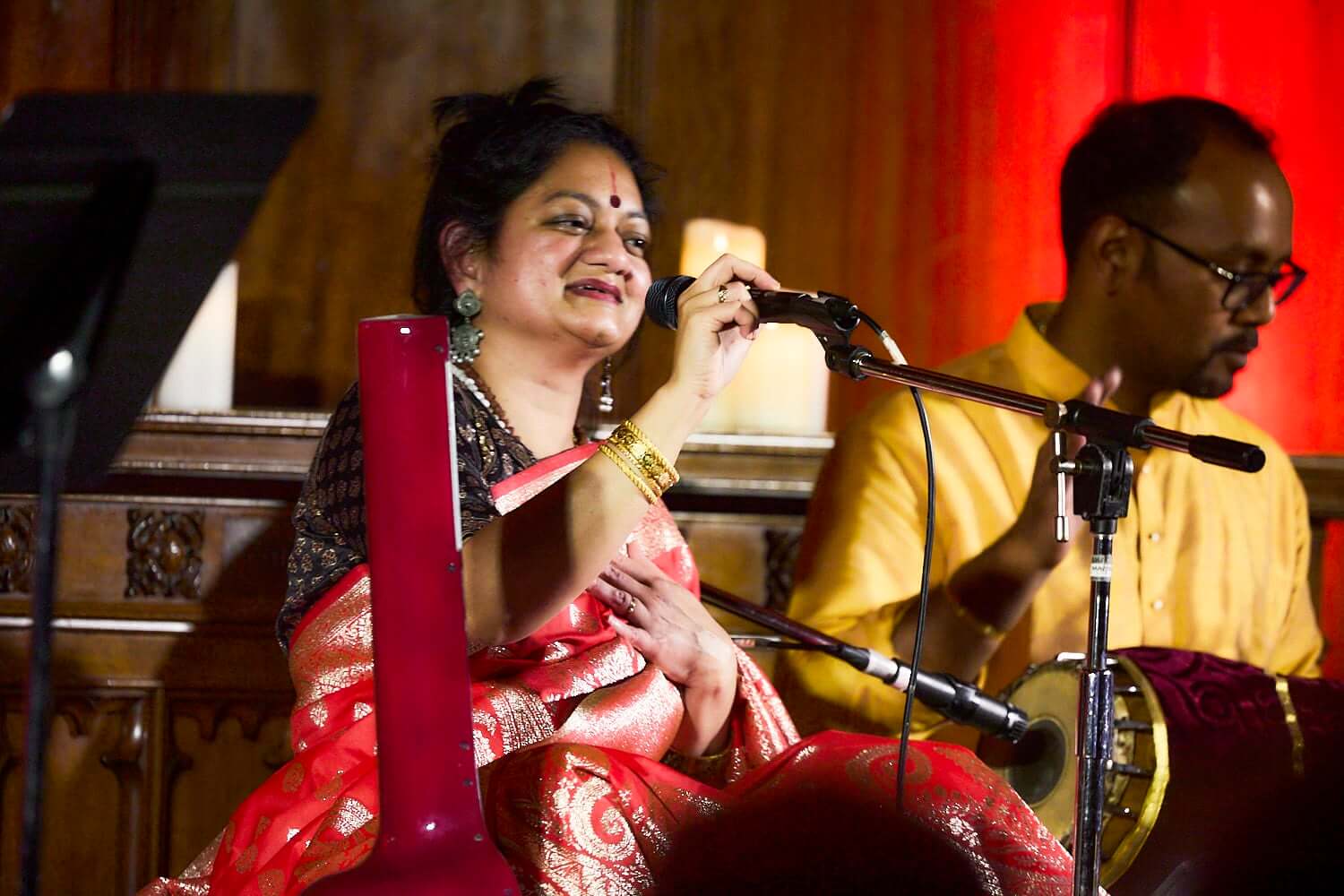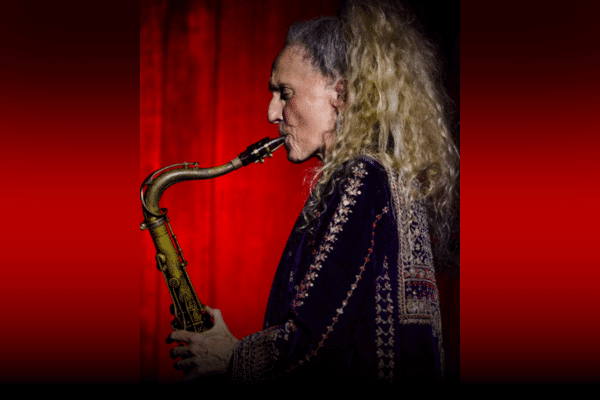At the Women’s Jazz Music Festival in Sydney recently, Sandy Evans introduced her Indian jazz fusion band Shakti Spirit with a lilting saxophone melody.
We heard it before we saw it, because she wasn’t on stage with the other musicians.
She appeared from the far end of the hall, playing her sax as she walked towards the stage, her entrance subtle yet captivating. It wasn’t flashy in the style of a rock concert, but it was mesmerizing—a mystical, indie-jazz introduction that set the perfect tone for what lay ahead.
Evans was joined by Nadhamuni Gayatri Bharat on vocals, Jess Green on guitar, Lakshmi Narendra on veena, Pirashanna Thevarajah on mridangam and percussion, and Prahlad Iyer on the ghatam. The sheer beauty and emotional weight of their performance left me breathless.

Shakti Spirit’s performance wove together tradition and modernity, with Sandy Evans and Gayatri Bharat as the twin pillars. Evans, an award-winning Australian saxophonist renowned for her numerous Indian jazz collaborations, brought a powerful, almost haunting eerie to the stage. Gayatri’s voice, steeped in the knowledge of raga and the finesse of rhythmic improvisation, commanded the room with ethereal finesse. Their combined artistry echoed through the church like a modern-day invocation of ancient spirits.
Their journey on stage wavered between moments of ecstatic joy and heart-wrenching introspection. Their repertoire featured compositions based on poetry by three revered Indian mystics: Andal, Ammayar, and Venibai. Through each piece, the ensemble brought to life the mystics’ reverence, love, and yearning, underscoring the themes of femininity and resilience with their nuanced blend of Hindustani and jazz influences.
One piece in particular, “The Lullaby,” felt like a transcendent moment. Gayatri’s voice swelled with a sweetness that conjured images of solace and peace, though to me, it felt like the morning after a storm. The stillness of the wind, the smell of damp mud, birds chirping and the sun clearing through the clouds. There was something almost celestial about the way the music filled the church setting of St. Stephen’s Uniting Church, its high notes harmonised with lights that reflected off the stained-glass windows, casting a surreal, bokeh-like effect onto the roof and walls. The church’s gothic architecture, the ethereal lighting, and the waves of sound created a layered, otherworldly atmosphere that was nothing short of magical.
The filmmaker in me began mentally framing scenes, envisioning the music as a soundtrack to stories of hurt, healing, and empowerment. The band’s intricate interplay of instruments captured the depths of human emotion, evoking images of women overcoming pain and emerging as strong, fierce individuals. It was empowering to witness Indian music conveying such profound narratives in a way that felt universal, bridging gaps between cultures and generations.
Throughout the performance, each musician had their moment to shine. There were solos, duets, and seamless transitions where the artists would step forward and recede, creating a tapestry of sound that kept us entranced. The ghatam’s earthy resonance contrasted beautifully with the saxophone’s jazzy flair, and the percussive beats of the mridangam brought a pulsating energy that made it impossible not to bob your head or tap your feet. By the end of the night, the wooden floor vibrated under the audience’s excitement—a communal experience of joy and surrender.
The audience was equally diverse in background and intent.

Alongside the polished spectators were the young musos in black, sporting metal jewellery and exuding an unpretentious assurance in their taste. They seemed at ease, their rhythmic foot-tapping and enthusiastic hoots showing just how much this fusion jazz had resonated with them. Here we were, in Sydney, collectively surrendering to the immersive power of Hindustani classical fused with jazz. If I had to coin a term for it, I’d call it “Hindustani Jazzical.”
Despite a few minor technical drawbacks—occasional high notes from the vocals that edged on jarring due to the volume—the evening was a resounding success. Shakti Spirit’s performance reminded me that Sydney, often thought of as a city chasing trends, has pockets of genuine character where niche artforms can thrive. This event showcased the city’s diversity and underscored the universal appeal of music that transcends boundaries.
In the end, what lingered with me wasn’t just the music, but the emotional journey Shakti Spirit had taken us on. This wasn’t a mere concert; it was a celebration of the human experience, filtered through the lens of a rich, cultural tapestry. In their hands, jazz and Indian classical music voiced perseverance, resilience, and grit.
Read more: An odyssey of dance: Queensland’s Lillian Warrum on learning Odissi





